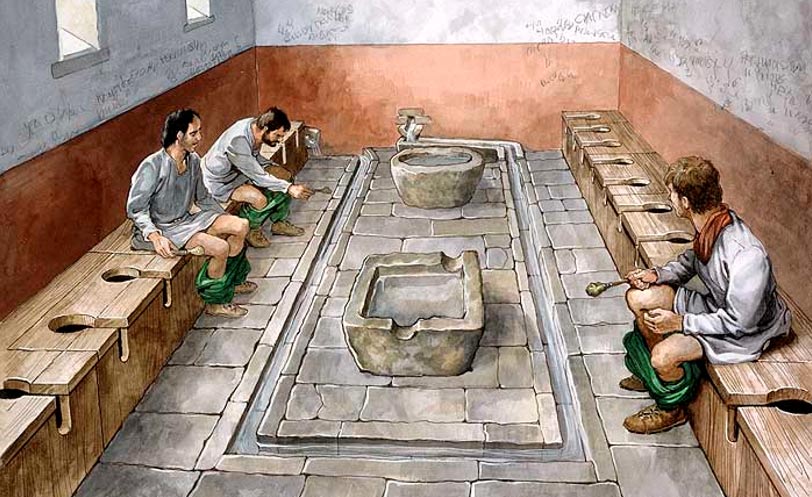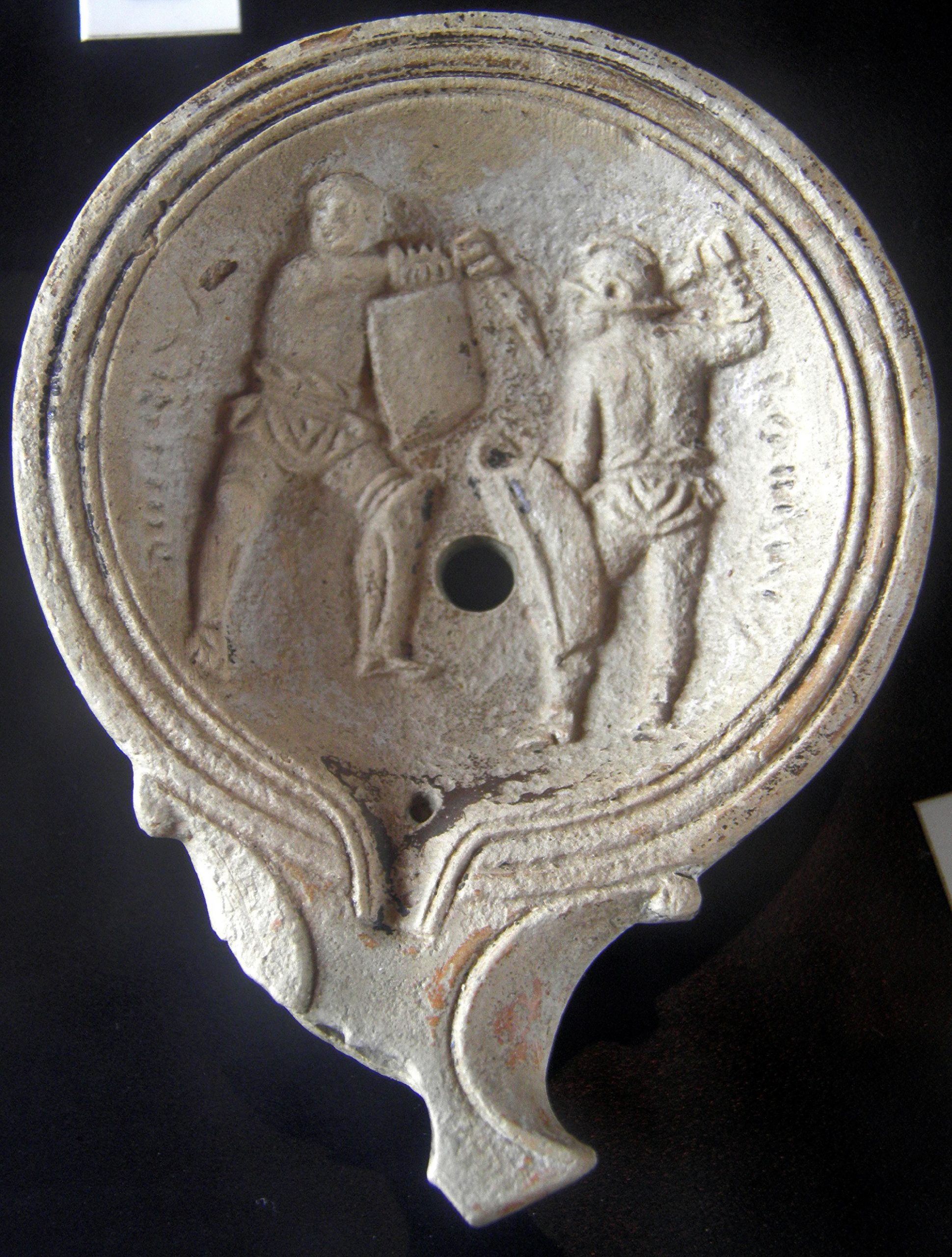
A day at the Games in the Ancient Colosseum.
Where is the one place you absolutely have to go in Rome? To see the icon of ancient Rome and the most impressive Roman structure still standing – The Colosseum. Today visitors wander around the shell of Rome’s largest amphitheatre trying to imagine where the seats were, how high did the building soar up to, how many people could fit in the stadium and what were the games like?
A day out at the Colosseum may well have been the highlight of your year if you were an ordinary Roman in ancient times. This was an elite affair for the top dogs of Rome – tickets were scarce because the Colosseum held much fewer spectators than the races at the Circus Maximus (AROME/CMAXIMUS) and there were fewer days of games because they were extremely costly to put on. If you were lucky enough to get in, you were in for a real treat.
Not just a Show but an Experience
Just imagine standing outside the crowded stadium clutching your ticket (made of wood, terracotta or bronze), looking for your numbered entrance; once inside you were led straight to your seat – hopefully you remembered your cushion! It wasn’t just about the games, but the atmosphere, the people – who knows who you might meet in the crowd of 80,000 people. A day out at the games meant a full day of shows, but it was all an experience, the Flavian Amphitheatre was a building to behold, a masterpiece of engineering which was beautifully decorated inside and out. There was coloured plaster on the ceiling, decorations on the walls, fine marble and statues everywhere – for the ordinary Roman this was a slice of how the other half lived!
All of this was paid for by the emperor! On very special occasions bread, money or gifts were thrown into the crowd, on hot days rose-scented water was sprayed to keep spectators cool (and hide the smell of body odour).
The show
A day out at the colosseum was an all-day affair, it started early with the venationes (BLOG VENATIONES), animal hunts with trained animal fighters armed with spears and bows and arrows, sometimes on horseback. This was not just hack and slash it was a hunt made realistic with scenery like boulders, bushes and trees, even buildings were constructed on the arena as a backdrop to the hunt. Another element was seeing weird and wonderful creatures unlike anything had been seen before.
At lunchtime (the hottest part of the day) was the executions, again we should not think just heads rolling off without any display, this was more spectacular. Criminals played the parts of those who die; like in the story of Icarus– a young man who flew too close to the sun with wings made of feathers and wax and plummeted to his death. This was re-enacted in the colosseum; how did they achieve this? Perhaps they strapped wings on a criminal who was suspended above the crowd and then set fire to him? These executions were spectacles with costumes and a bit of glam. Between the various shows there would have been other performances like dancers and jugglers and announcements.
The gladiatorial bouts in the afternoon was the highlight of the games, this is when the professional fighters came out, skin oiled and glowing, bristling with weapons, wearing polished armour with colourful plumed helmets. These were the stars of the show – the sportsmen and sex symbols of their day.
Spectator services
With thousands of spectators crammed into the stadium all day, the Flavian amphitheatre had amenities for the crowd to keep them comfortable throughout the day – just like our modern stadiums. Although the Colosseum was an open building, many of the games were held in the winter – rain or shine the crowd was protected by a retractable awning or canopy called the velarium, operated by retired sailors way above the crowd (we can still see the holes at the top of the building where the poles to hold the awning were attached!).
What about food and drink? Did the Colosseum have hotdog stands? The sophisticated sewer system of the colosseum can perhaps answer that question; the remains of chicken bones, shellfish, olives, nuts and fruits like peaches, cherries and grapes have been found in the sewers. You could no doubt bring food with you and vendors set up food stalls outside and perhaps inside. Pottery and glassware remains suggest people were drinking wine in the crowd and evidence shows that the Colosseum had side towers with cisterns filled with water which feed drinking fountains (on the first three levels at least).
Did the ancient Colosseum have toilets? Thousands of spectators crammed in all day eating and drinking, of course there were toilets! Let’s not forget that the Romans were master engineers, particularly when it came to water. The structure got its water supply from the Aqua Claudia and lead and terra-cotta pipes were installed in the walls, overflow water from the fountains above washed the countless corner urinals on the higher levels and drains on the ground floor level suggest public latrines.

The arches of the colosseum inside held all kind of shops and stalls from food to souvenirs, in the display cases of the colosseum you can see oil lamps decorated with gladiators and different types of animals, figurines for kids and amulets with swords and helmets have been found elsewhere. Gladiator trinkets must have been big business just like the mini plaster colosseums people buy today. Betting would have been a regular feature of the gladiator fights, just like people bet on boxers or horse races today – the games were a great opportunity to get rich quick if you bet on the winning gladiator.
One service not available at our modern sport arenas were pop-up brothels. Under the arches became known as fornicaria because of the brothels that operated here even when the games were not on! For the cost of two cheap glasses of wine, spectators could have ‘a quickie’ and then get back to the games! Whilst we may not agree with this today, a lot of testosterone and aggression built up in the mostly male crowd, and for the prostitutes – they could earn a great deal on games day!
Just like today
Although nowadays our stadiums are equipped with all kinds
of technology like big screens and lights and loud speakers, the basic concept and needs were the same, as we have seen – the colosseum is a stadium. Whilst the entertainment at the games may have been different from our shows and sporting events today, the excitement of the crowds and the experience was similar. Ancient Romans ate and drank, screamed at the performers, betted and bought souvenirs just like we do today; the crowds gathered for the same reasons as us – for a great day out!
